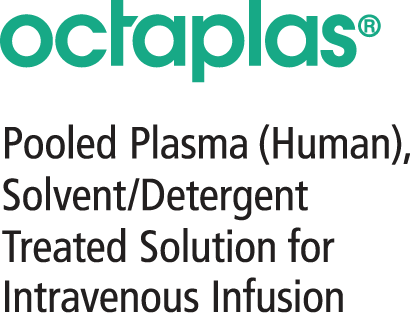Minimize Risk of Transfusion Related Reactions
Optimized integration of plasma by pooling 630 to 1,520 single units of FFP1
- Minimizes risk of pathogen transmission1-4
- Immune neutralization of enveloped and non-enveloped viruses
- Minimizes risk of allergic reactions3
- Dilution of substances that can lead to an allergic reaction
- Minimizes risk of TRALI3
- Dilution and neutralization of free anti-HLA/HNA antibodies
Cell and cell debris removal by filtration (1.0 µm)3
- Minimizes risk of allergic reactions3
- Removal of cell debris and cells such as mast cells, which contain histamine
- Minimizes risk of TRALI3
- Removal of cell-bound anti-HLA/HNA antibodies
- Removal of bioactive lipids that are located on outer side of cells
S/D treatment
- Minimizes risk of pathogen transmission2-4
- Inactivation of enveloped viruses
Sterile filtration (0.2 μm)3
- Minimizes risk of bacteria and parasite transmission5
TRALI = Transfusion-Related Acute Lung Injury, HLA = Human Leukocyte Antigen, HNA = Human Neutrophil Antigen.
References:
- Octapharma. Data on file; 2013.
- Octaplas Full Prescribing Information. Paramus, NJ: Octapharma; rev 2021.
- Bertolini J, Goss N, Curling J, eds. Production of Plasma Proteins for Therapeutic Use. Hoboken, NJ: John Wiley & Sons; 2013:345-351.
- Hellstern P, Solheim BG. The use of solvent/detergent treatment in pathogen reduction of plasma. Transfus Med Hemother. 2011;38:65-70.
- WHO Technical Report, Series No. 924, 2004, Annex 4, Guidelines on viral inactivation and removal procedures intended to assure the viral safety of human blood plasma products.
